Abstract
1. The contraction time and the voluntary discharge properties of forty-five short toe extensor motor units were studied in man. 2. The contraction time of the individual motor unit was studied by using selective electrical nerve stimulation or by averaging the increase in force related to its electromyographic potential in tonic voluntary contraction. 3. Both methods showed a range of contraction times from 40 to 90 ms. 4. The discharge properties of the individual motor unit were studied with e.m.g. techniques, permitting the identification of its potentials during maximum voluntary effort. 5. A motor unit which could be driven continously and had a minimum rate of about 10/s and a maximum rate of about 30/s had a contraction time between 60 and 90 ms. 6. A motor unit which could not be driven continously and had a minimum rate of about 20/s and a maximum rate above 40/s had a contraction time between 40 and 55 ms. 7. A motor unit with intermediate voluntary discharge properties had an intermediate contraction time. 8. It is concluded that each motor unit fires at its fusion frequency in voluntary contraction and that the voluntary discharge frequency range of a motor unit can be used as an indication of its contraction time.
Full text
PDF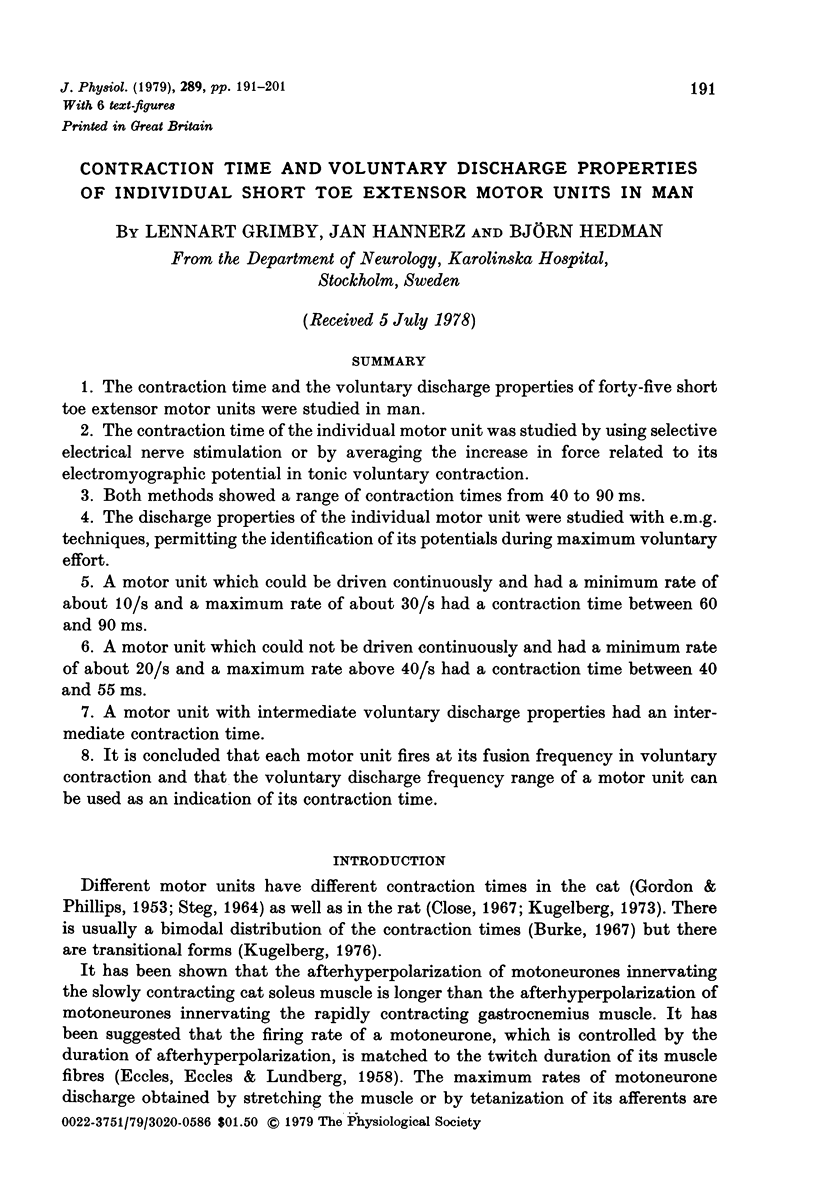
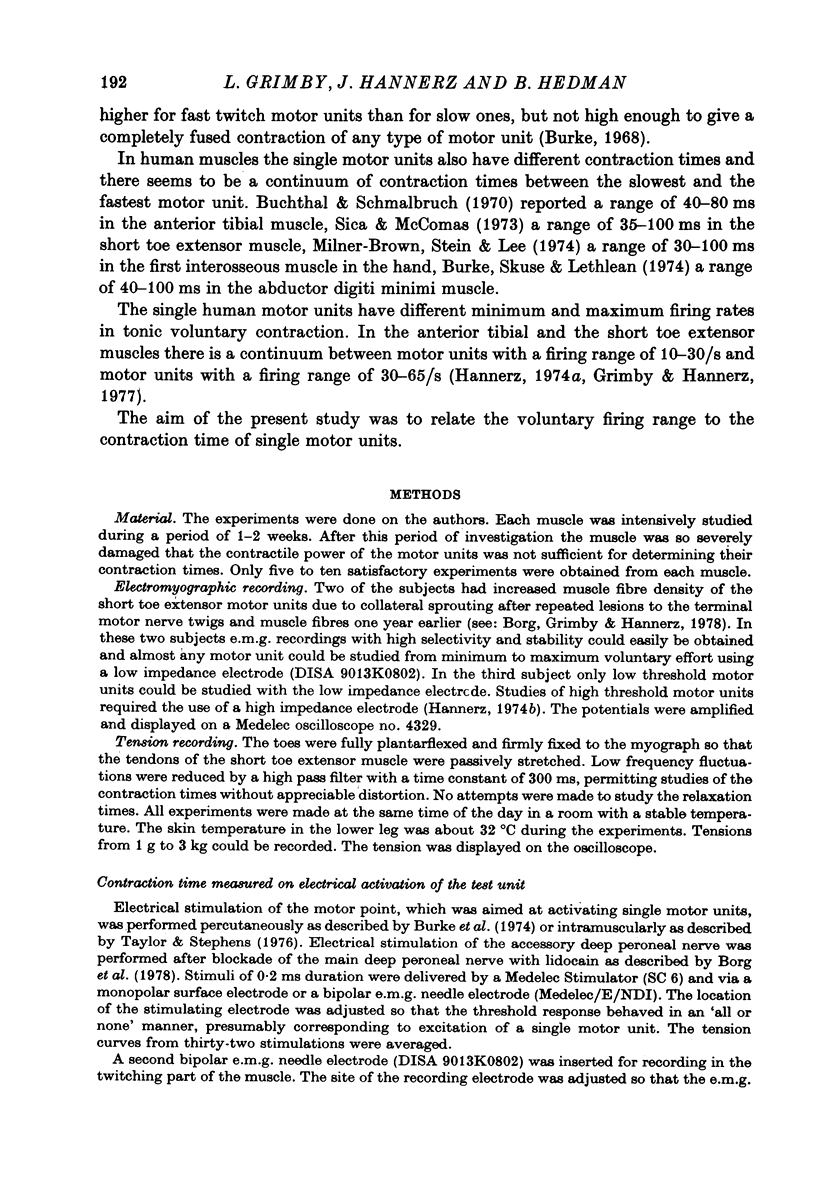
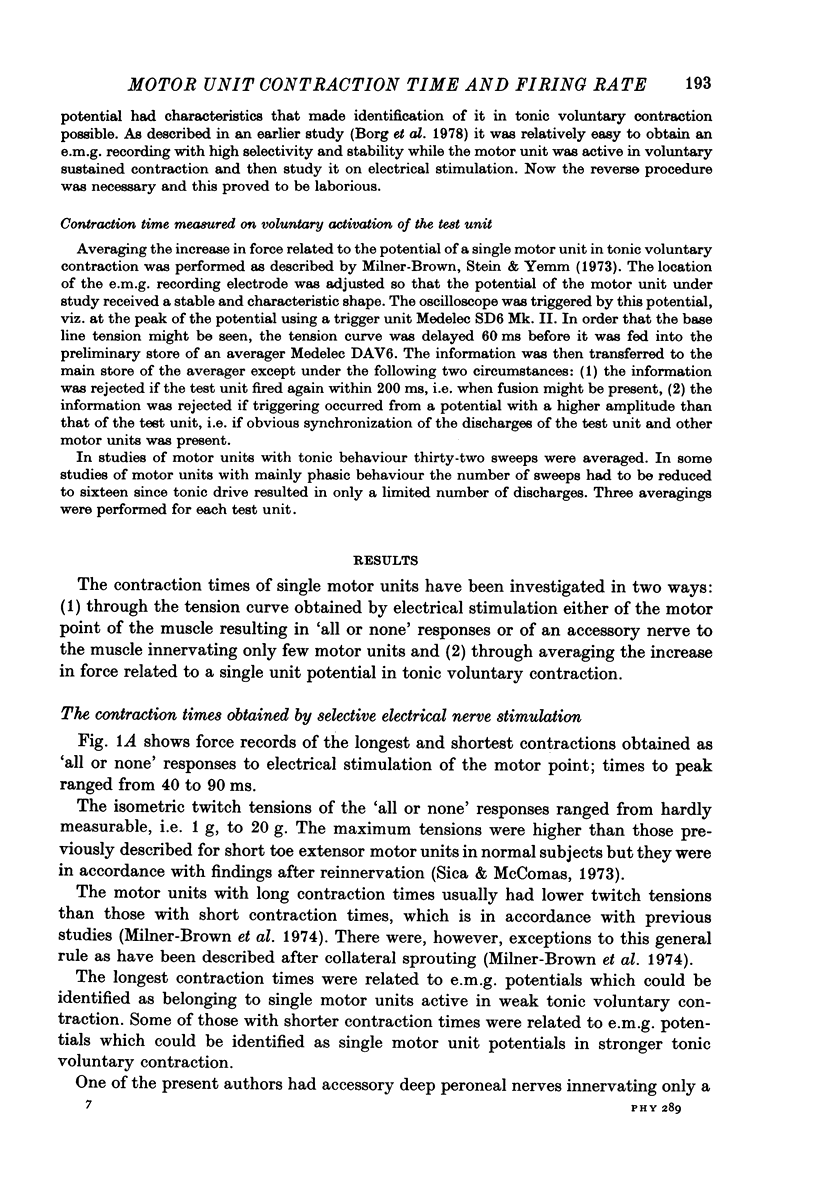
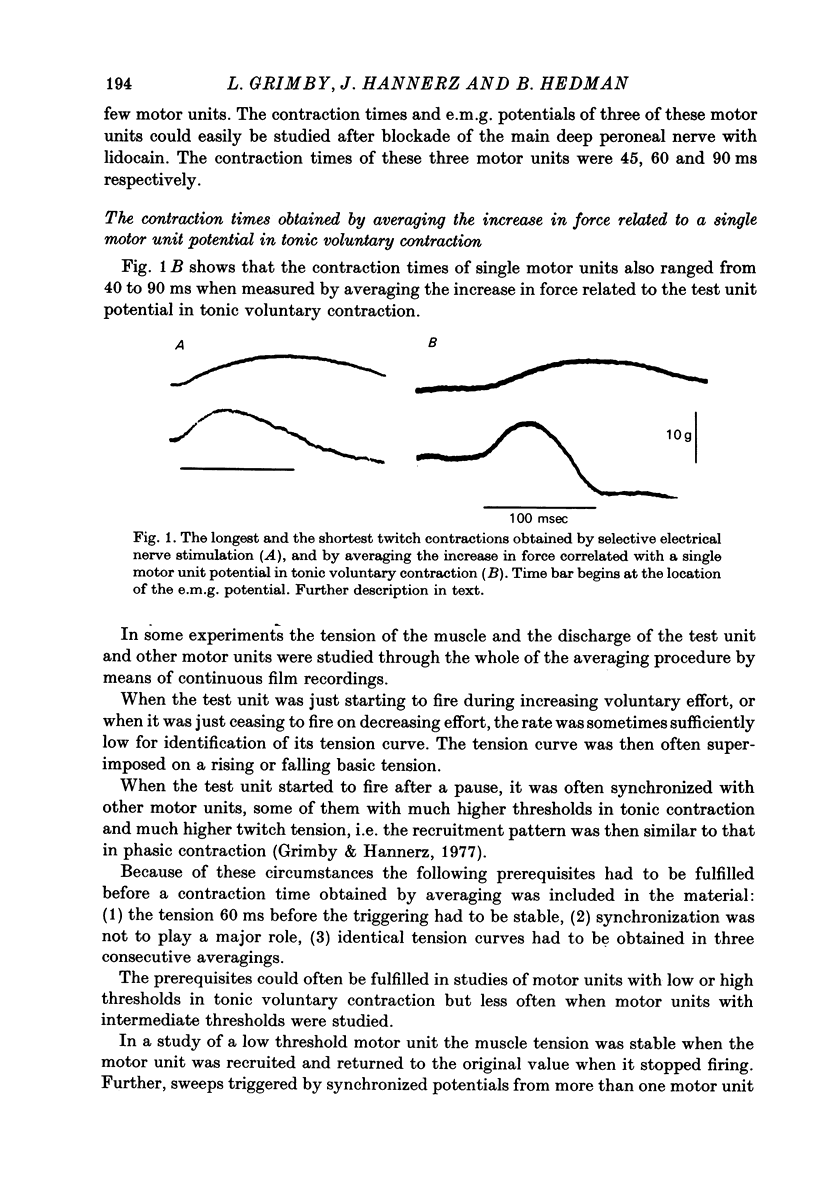
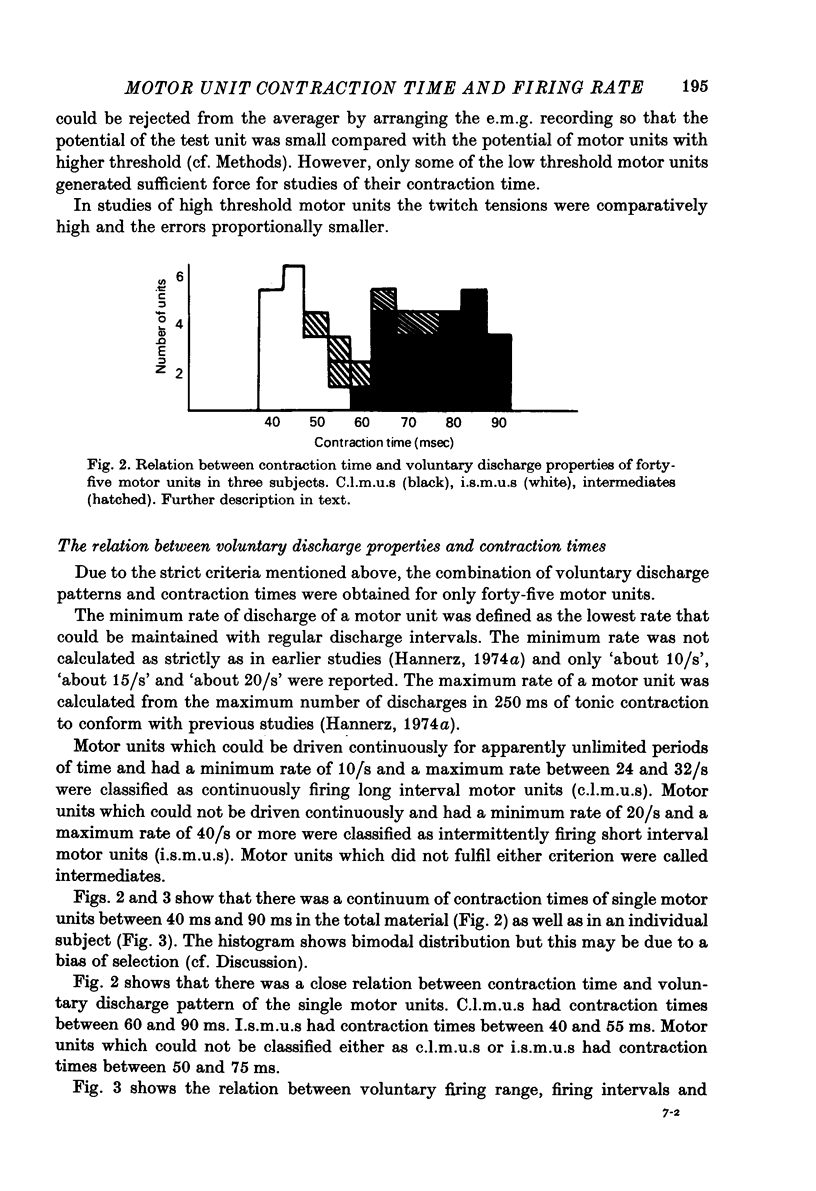
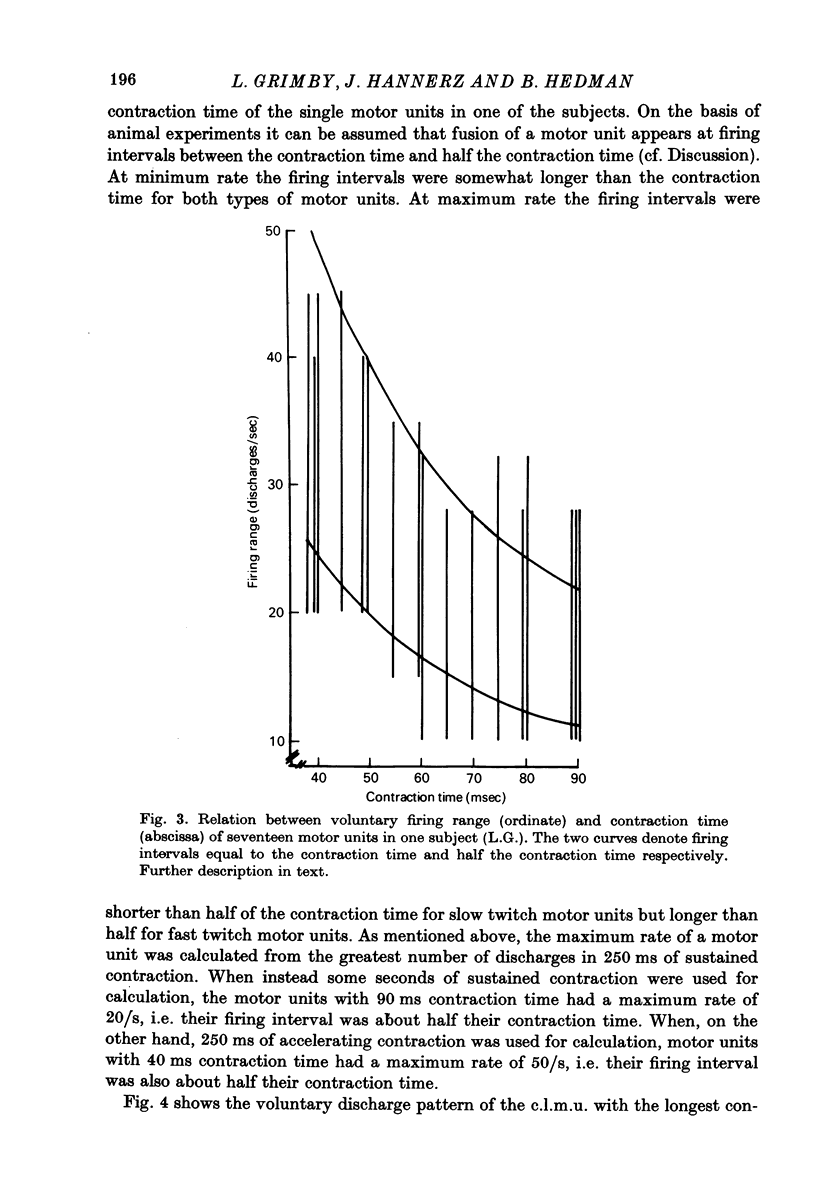
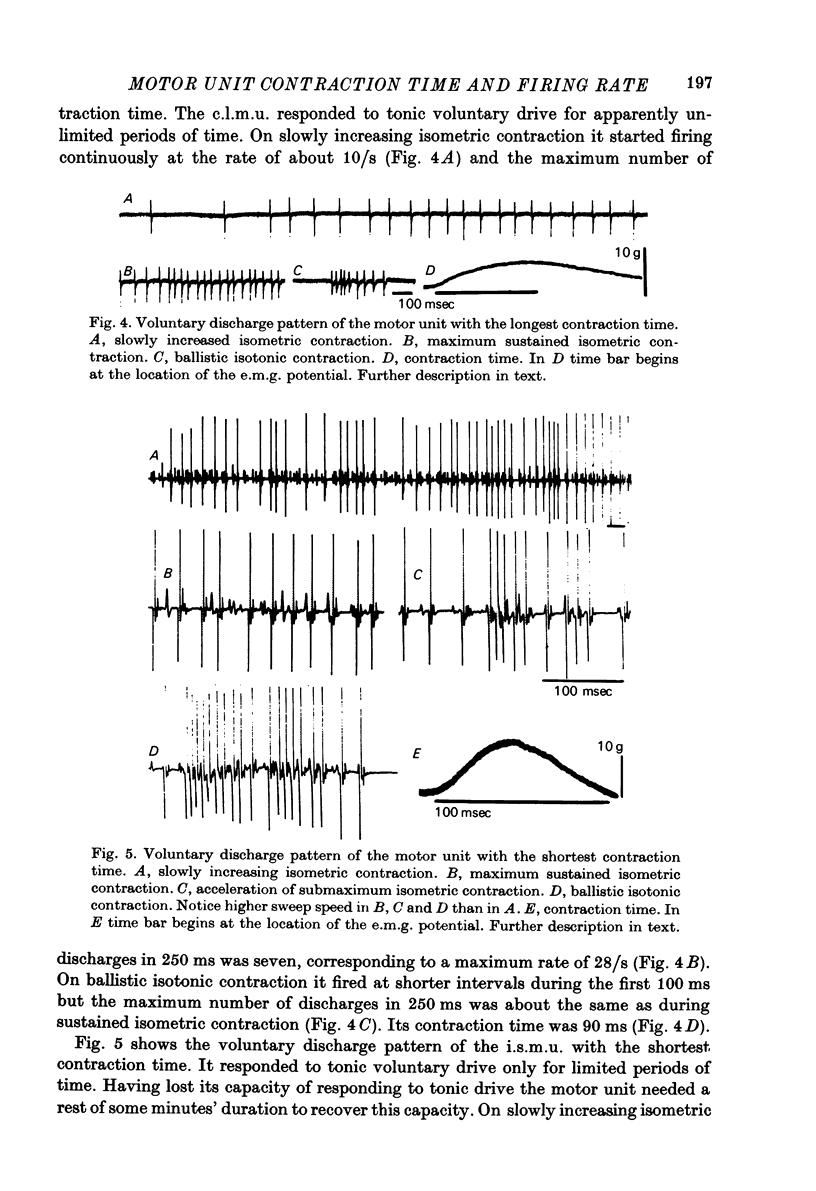
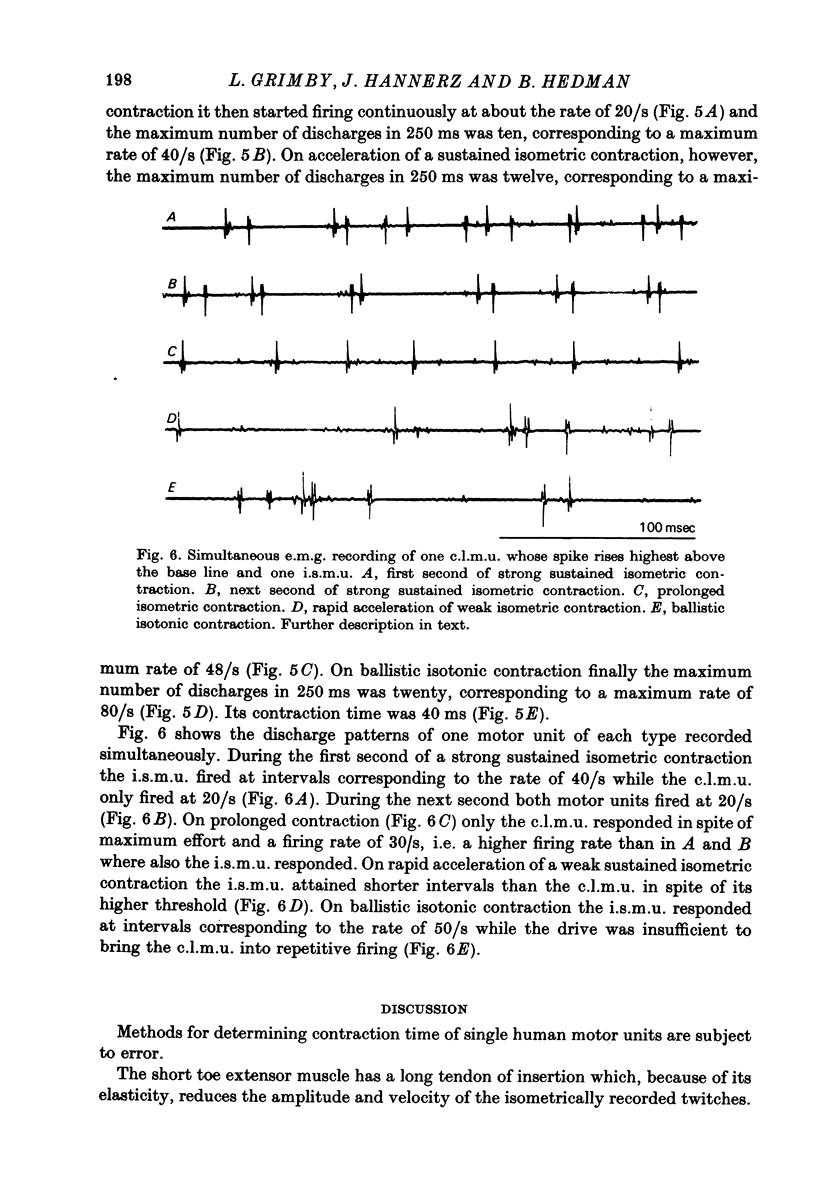
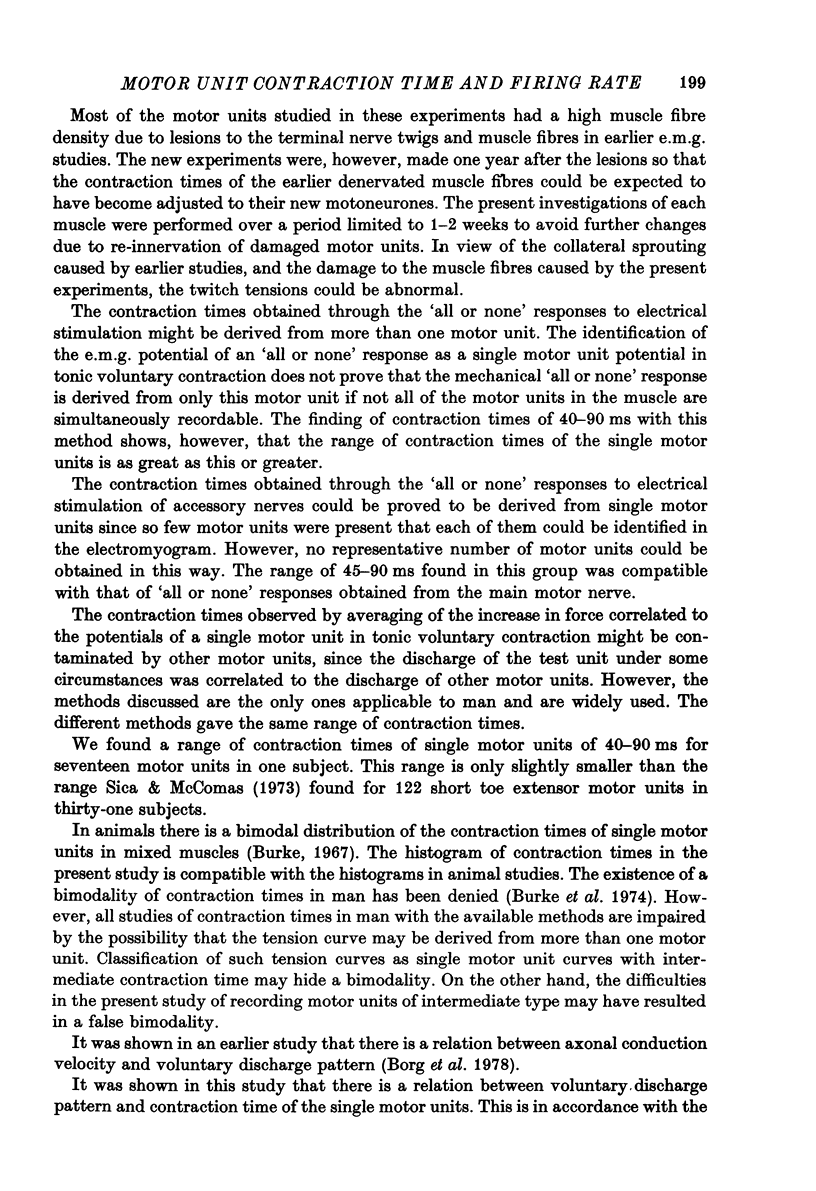
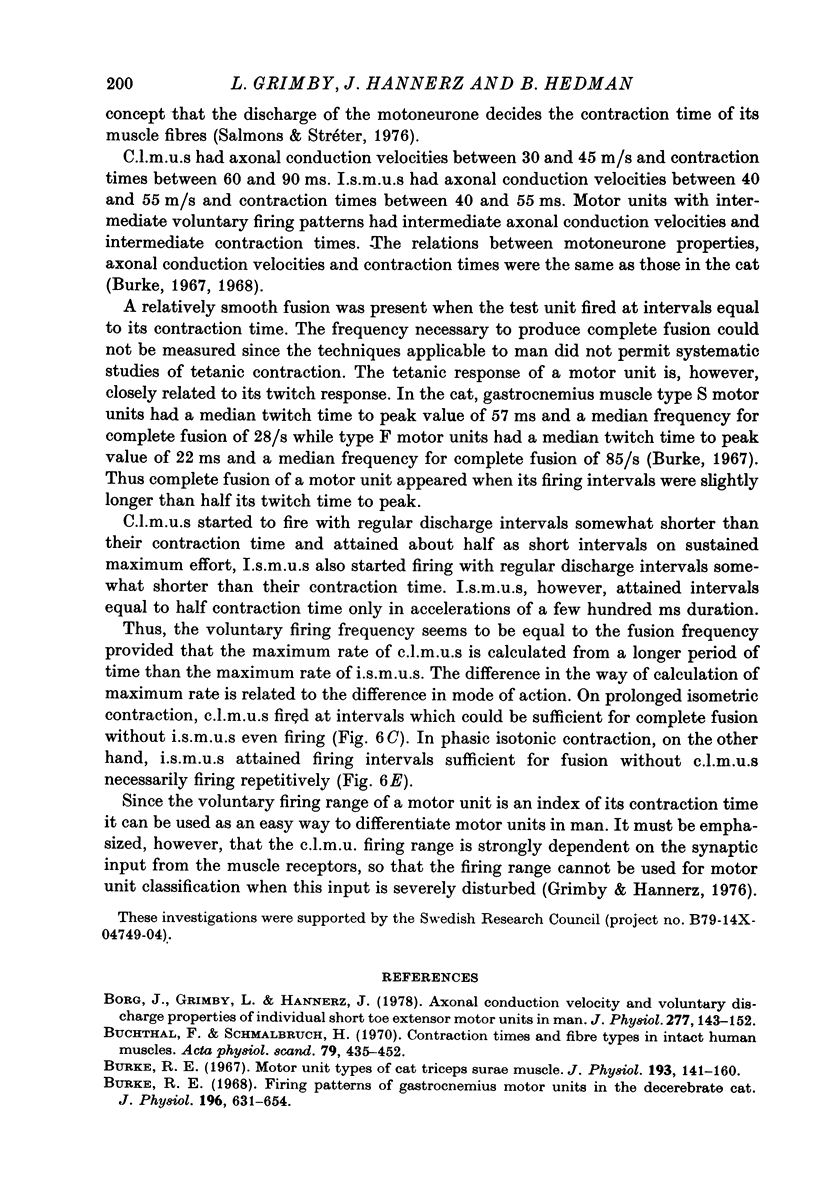
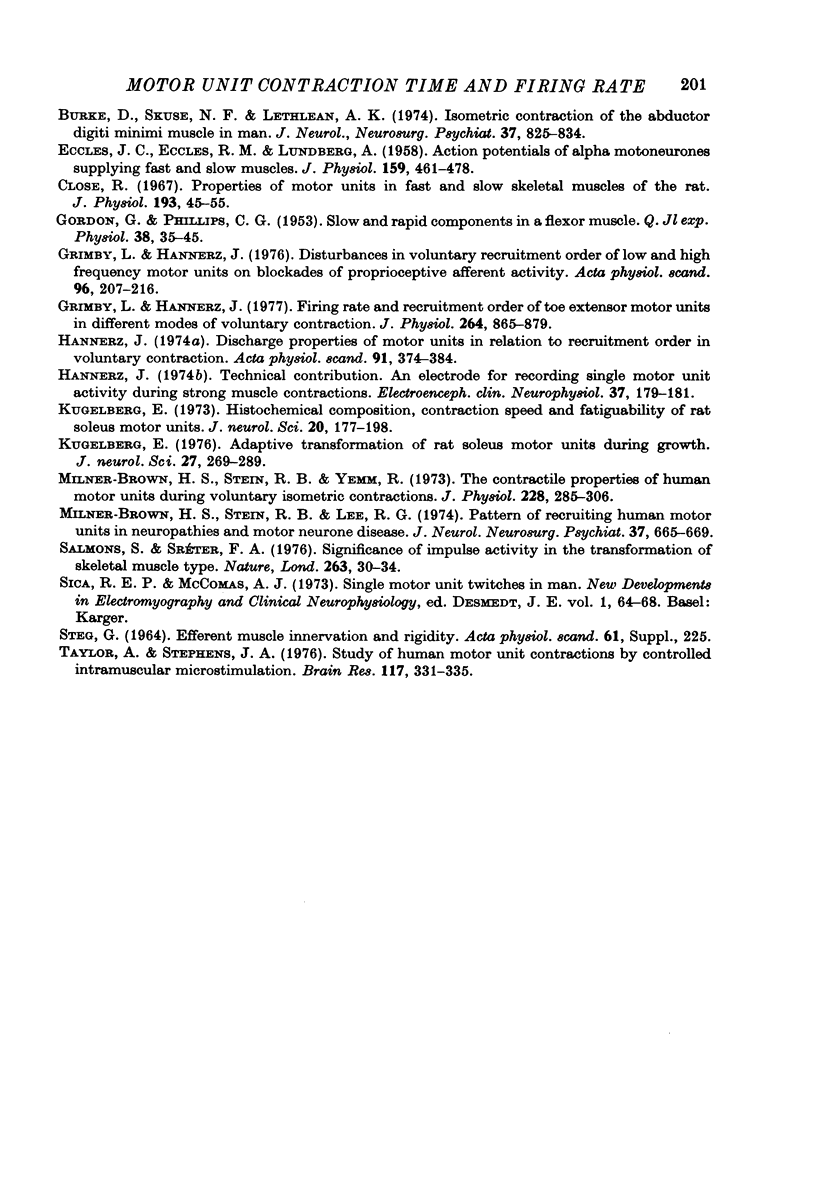
Selected References
These references are in PubMed. This may not be the complete list of references from this article.
- Borg J., Grimby L., Hannerz J. Axonal conduction velocity and voluntary discharge properties of individual short toe extensor motor units in man. J Physiol. 1978 Apr;277:143–152. doi: 10.1113/jphysiol.1978.sp012266. [DOI] [PMC free article] [PubMed] [Google Scholar]
- Buchthal F., Schmalbruch H. Contraction times and fibre types in intact human muscle. Acta Physiol Scand. 1970 Aug;79(4):435–452. doi: 10.1111/j.1748-1716.1970.tb04744.x. [DOI] [PubMed] [Google Scholar]
- Burke D., Skuse N. F., Lethlean A. K. Isometric contraction of the abductor digiti minimi muscle in man. J Neurol Neurosurg Psychiatry. 1974 Jul;37(7):825–834. doi: 10.1136/jnnp.37.7.825. [DOI] [PMC free article] [PubMed] [Google Scholar]
- Burke R. E. Firing patterns of gastrocnemius motor units in the decerebrate cat. J Physiol. 1968 Jun;196(3):631–654. doi: 10.1113/jphysiol.1968.sp008527. [DOI] [PMC free article] [PubMed] [Google Scholar]
- Burke R. E. Motor unit types of cat triceps surae muscle. J Physiol. 1967 Nov;193(1):141–160. doi: 10.1113/jphysiol.1967.sp008348. [DOI] [PMC free article] [PubMed] [Google Scholar]
- Close R. Properties of motor units in fast and slow skeletal muscles of the rat. J Physiol. 1967 Nov;193(1):45–55. doi: 10.1113/jphysiol.1967.sp008342. [DOI] [PMC free article] [PubMed] [Google Scholar]
- GORDON G., PHILLIPS C. G. Slow and rapid components in a flexor muscle. Q J Exp Physiol Cogn Med Sci. 1953;38(1):35–45. doi: 10.1113/expphysiol.1953.sp001005. [DOI] [PubMed] [Google Scholar]
- Grimby L., Hannerz J. Disturbances in voluntary recruitment order of low and high frequency motor units on blockades of proprioceptive afferent activity. Acta Physiol Scand. 1976 Feb;96(2):207–216. doi: 10.1111/j.1748-1716.1976.tb10190.x. [DOI] [PubMed] [Google Scholar]
- Grimby L., Hannerz J. Firing rate and recruitment order of toe extensor motor units in different modes of voluntary conraction. J Physiol. 1977 Jan;264(3):865–879. doi: 10.1113/jphysiol.1977.sp011699. [DOI] [PMC free article] [PubMed] [Google Scholar]
- Hannerz J. An electrode for recording single motor unit activity during strong muscle contractions. Electroencephalogr Clin Neurophysiol. 1974 Aug;37(2):179–181. doi: 10.1016/0013-4694(74)90011-x. [DOI] [PubMed] [Google Scholar]
- Hannerz J. Discharge properties of motor units in relation to recruitment order in voluntary contraction. Acta Physiol Scand. 1974 Jul;91(3):374–385. doi: 10.1111/j.1748-1716.1974.tb05692.x. [DOI] [PubMed] [Google Scholar]
- Kugelberg E. Adaptive transformation of rat soleus motor units during growth. J Neurol Sci. 1976 Mar;27(3):269–289. doi: 10.1016/0022-510x(76)90001-0. [DOI] [PubMed] [Google Scholar]
- Kugelberg E. Histochemical composition, contraction speed and fatiguability of rat soleus motor units. J Neurol Sci. 1973 Oct;20(2):177–198. doi: 10.1016/0022-510x(73)90029-4. [DOI] [PubMed] [Google Scholar]
- Milner-Brown H. S., Stein R. B., Lee R. G. Pattern of recruiting human motor units in neuropathies and motor neurone disease. J Neurol Neurosurg Psychiatry. 1974 Jun;37(6):665–669. doi: 10.1136/jnnp.37.6.665. [DOI] [PMC free article] [PubMed] [Google Scholar]
- Milner-Brown H. S., Stein R. B., Yemm R. The contractile properties of human motor units during voluntary isometric contractions. J Physiol. 1973 Jan;228(2):285–306. doi: 10.1113/jphysiol.1973.sp010087. [DOI] [PMC free article] [PubMed] [Google Scholar]
- Salmons S., Sréter F. A. Significance of impulse activity in the transformation of skeletal muscle type. Nature. 1976 Sep 2;263(5572):30–34. doi: 10.1038/263030a0. [DOI] [PubMed] [Google Scholar]
- Taylor A., Stephens J. A. Study of human motor unit contractions by controlled intramuscular microstimulation. Brain Res. 1976 Nov 26;117(2):331–335. doi: 10.1016/0006-8993(76)90742-3. [DOI] [PubMed] [Google Scholar]


